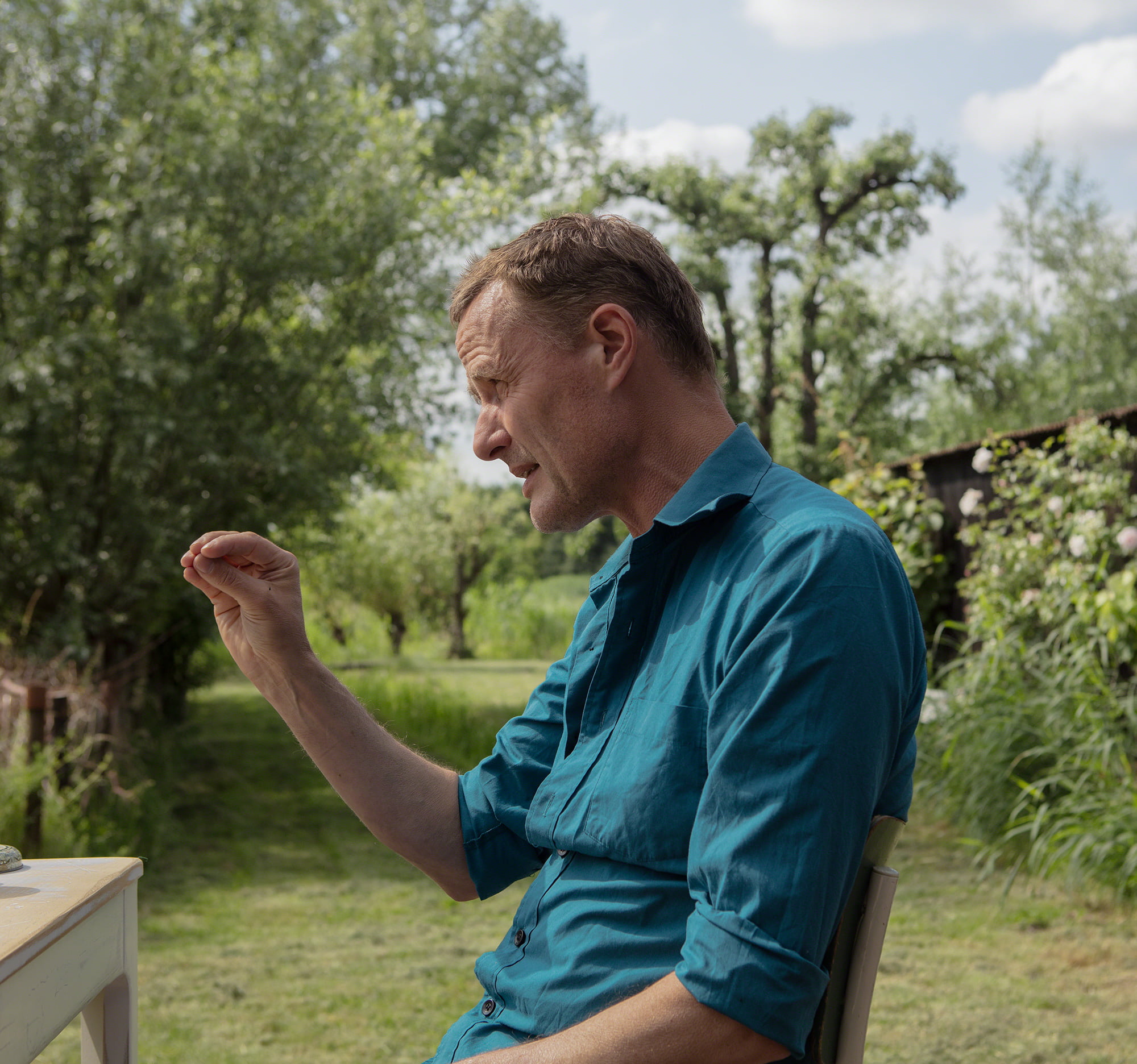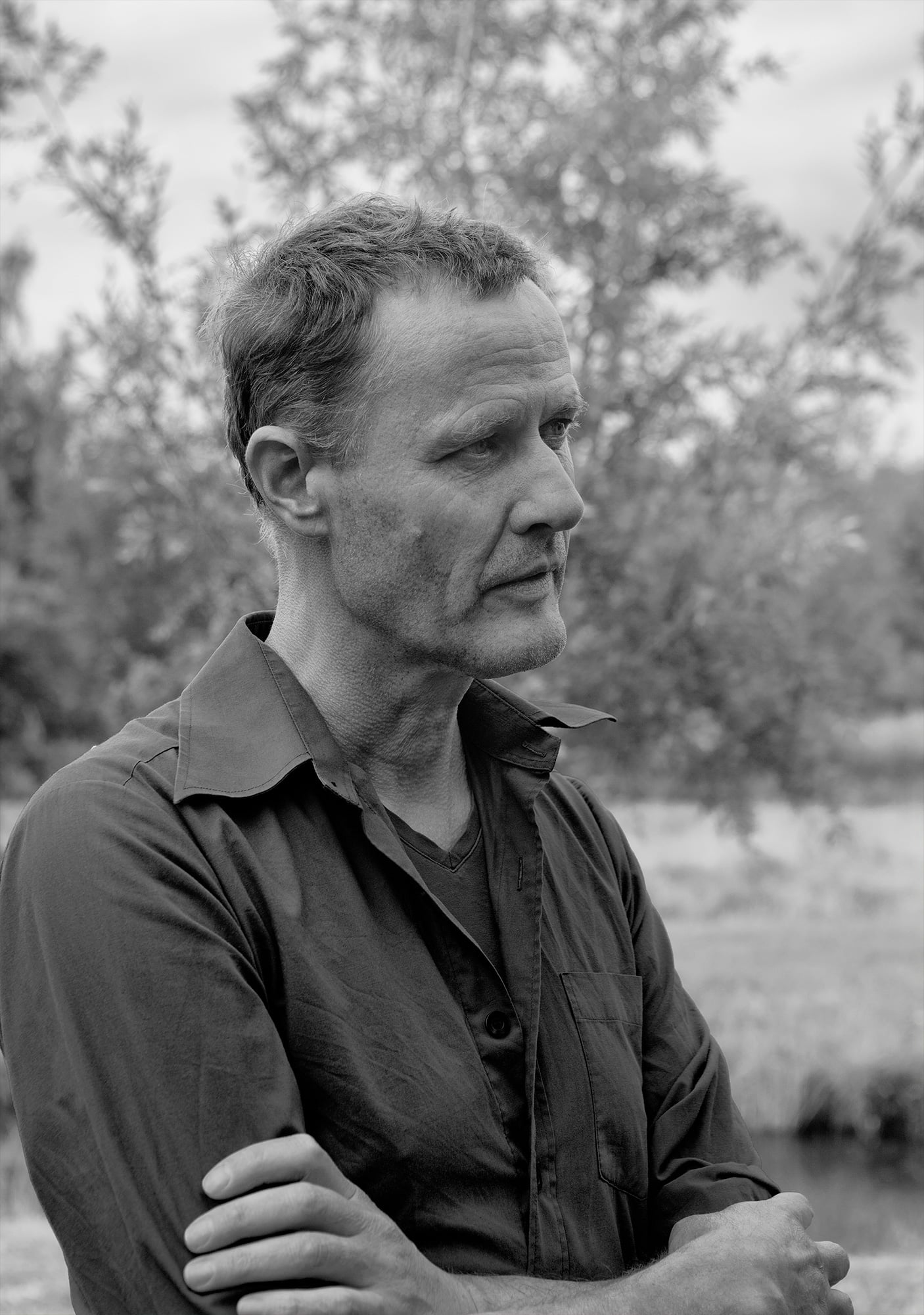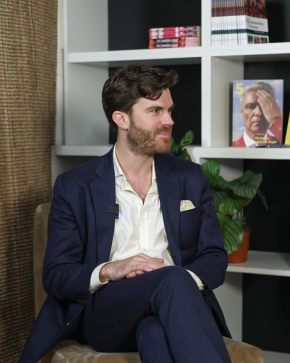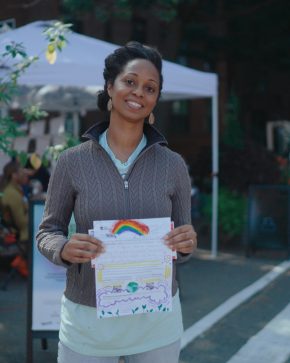It took the death of George Floyd, a black man choked by a white police officer, to set alight a dynamic of polarisation that had long been brewing in the US. As developments unfold, it makes sense to try and understand this “us-versus-them” thinking. Who better to ask than Dutch philosopher Bart Brandsma, the man responsible for developing a unique model for understanding and dealing with polarisation.
It’s hard to imagine yourself further removed from the turmoil we’re seeing in the US than in the tiny rural village in the Netherlands where Bart Brandsma lives. A narrow driveway takes you down a steep dike to his house, where a beautifully refurbished piggery now serves as his office; he did most of the building himself, when he wasn’t developing his understanding of the dynamics of polarisation.
“I am not for or against polarisation. Sometimes it can be a wonderful thing and we actually need it; it’s the engine of development. In a democracy, polarisation is part of the game. There would be no civilisation without it, there would be no democracy without it. But polarisation can get out of control and at that point you want to depolarise. Politicians in the US are very good at polarising, but they are not so good at depolarising. While political polarisation is needed for a democracy, it shouldn’t lead to social polarisation, because then it constitutes a threat to society. That is what you see happening there now.”
Sitting outside in the sun, overlooking a small orchard with apple trees and sheep, Brandsma speaks calmly about his expertise. He studied social and political philosophy and then went on to work as a journalist and documentary maker. “My goal was to use journalism to bring the power and beauty of philosophy to society,” he says. Almost 20 years ago, while he was working for the Dutch Muslim Broadcasting Corporation where most of his colleagues were Muslim, he felt he increasingly stood out as the “non-Muslim”. Was it possible to refuse such a label he wondered. The idea fascinated him so much he wrote a book about it, which would become the foundation for the model he developed, which he calls the Polarisation Framework. Today he is in high demand, both in and outside the Netherlands, as a consultant and trainer for professionals who have to deal with polarisation in their work. “Conflict management already existed; management courses often include components that deal with styles of conflict, but there was nothing similar that dealt with polarisation. So that’s what I set out to develop. I wanted to create it, because it didn’t exist.”
Bart Brandsma (1967) studied social and political philosophy at the University of Groningen in the Netherlands. In 2016 he published a book titled “Polarisation, understanding the dynamics of us versus them”. His previous book, “Truth and Truthfulness. The difference between Muslim and non-Muslim thought” (2006) was nominated for the prestigious Socrates Award, a prize for most accessible philosophy book. As a consultant and trainer he presents courses internationally for professionals who have to deal with polarisation. To find more information about his work go to www.insidepolarisation.nl.

Brandsma figured that Northern Ireland, where polarisation between Catholics and Protestants had been evident for over 30 years, would be a good place to start. As his work progressed he realised he was onto something that made a lot of sense, but it was a number of years before his ideas gained traction. The Dutch National Police gave him a serious break when they first approached him for help on the issue of ethnic profiling. From there he was approached by mayors and local government figures before ministers in national government started seeking him out for advice.
Polarisation dynamics
The level of polarisation we see today in the US has a major impact on countries around the world, and on an increasing number of people. But according to Brandsma, the underlying dynamic is always the same, whether the polarisation is in a family environment, a school, a neighbourhood, company, country or at an international level.
In Brandsma’s Polarisation Framework he formulates three basic laws of polarisation. First, there is always a thought construct; this is something that we can’t observe because it happens in our minds, but it pits one pole against another, or one identity against another. The second law is that this thought construct will only persist if people continue to fuel it, i.e. if they continue to make assertions about the nature of the other pole. His third law is that this fuel speaks to people’s gut feeling, a dynamic in which logic and reasoning will no longer help out the professional.
In the dynamic of polarisation, different people play different roles, says Brandsma, the most visible being the “pusher”. “A pusher believes that their story is the right story, the one people should follow; it could be Marine Le Pen but it could just as well be Greta Thunberg. Pushers have a simple task: to add fuel to any situation where two poles face each other. Donald Trump is the epitome of a pusher, with statements like: ‘The Chinese are taking our jobs’, ‘Mexicans are lazy’, ‘Civil servants are a waste of taxpayers money’. Pushers see themselves as idealists.”


A pusher’s topic is always the identity of another group, so it could be one school class talking about another school class, one parent talking about the other during divorce proceedings, or black and white, rich and poor, young and old, each of them saying something about the identity of the group they oppose. But, as Brandsma points out, pushers don’t speak directly to the opposing pole. “They’re targeting the people in the middle, those who don’t belong to either pole. That is crucial. We often think that pushers want to persuade the other pole to join them on their side, but that’s not their main concern. Having an opposing pole is just a means to reach the people in the middle. I call that exerting polarisation pressure. So I am not talking about wrong or right here: Nelson Mandela was a pusher, but the Al Qaida ideologue Al-Zawahiri was also a pusher.”
Then there are those that Brandsma calls the “joiners”. “Joiners always say they’re not as extreme as the pushers, but then go on to say that the pusher has a fair point. So they join one of the poles, but always include a disclaimer by saying that they’re open to discussion.”
And then in between the two poles is a group that Brandsma labels the “silent”. “What we see very clearly now in the US, and in the whole debate around racism, is that pushers want the silent to speak up. One of the signs the recent protesters held up declared: ‘Silence is pro-racist’. A pusher will always urge people to choose. That is one of the key characteristics of polarisation: the struggle of the ‘silent’ to maintain its position as it experiences mounting pressure to polarise. That is certainly happening now in the US.”

Serving coffee made from freshly ground beans, and tea from a jug, Brandsma takes his time as he explains his theory, hand gestures emphasising the most important elements. Despite the complex subject matter, he finds his words easily and can make it accessible to those who are new to it. “The goal of the pushers is not to increase support for their position, but to drive the silent apart from each other, and ultimately to render that middle position unsustainable. Al-Qaida for instance committed acts of atrocity that in no way grew their support base in Europe. The attack on Charlie Hebdo created a lot more opposition than it did support for the attackers’ cause. The attackers see that as a good outcome – it forced people to choose. It increased polarisation. Pushers need to stay in the spotlight. In order to achieve that, they need to say increasingly radical things.”
Achieving the opposite
In many cases, where polarisation is on the rise, someone stands up and takes a position above the different parties. Brandsma calls these people the “bridge builders”. They want to unite the poles, assuming that there is room to raise arguments that haven’t yet been raised. Bridge builders take a rational approach; they are neutral and solution-oriented. They mean well, so their approach is a good one, right? “Unfortunately bridge builders often don’t see that by taking this position they often achieve the exact opposite of what they intend. That was one of the main findings of my research,” Brandsma explains. “Bridge builders resort to using the counter narrative and dialogue, which actually fuels polarisation. For instance when people speak about Syrian immigrants as fortune seekers, the bridge builder will point out that they’re from a war-torn country; this narrative is still about identity and therefore it sustains polarisation. Pushers love bridge builders because as long as they keep doing what they do, the pusher stays in the spotlight.”
And if you try to maintain your position in the middle, even when the pressure mounts, you risk becoming one of a group Brandsma dubs the “scapegoats”. “City mayors and the police often end up in this position,” says Brandsma. “The role of mayors is to be a connector in society; the police, at least in the Netherlands, are trained to be in touch with the community. But when the heat is really on, these roles are impossible to maintain. So as the silent, middle group shrinks under pressure to polarise, the people in it who are determined to hold on to their position, come under even more pressure.”
Traditional media can also add fuel to the dynamic, according to Brandsma. “They say they’ve listened to both sides and publish a balanced story. But what they often do is spotlight the pushers, not the silent voices in the middle. Social media only adds to that. Facebook and Twitter make it possible for someone who has always been anonymous and silent, to become a pusher overnight. That used to take a lot longer.”
“To depolarise, you need to understand that you shouldn’t be fighting the poles that oppose each other, but instead should strengthen the silent group in the middle”
Bart Brandsma
How to stop it
A tall man in his early fifties, Brandsma methodically moves from explaining the roles of those involved in the dynamics of us-versus-them thinking, to the approaches to defuse the tension and stop things from spiralling out of control. The clouds move in front of the sun as he establishes that there is no easy fix. “To depolarise, you need to understand that you shouldn’t be fighting the poles that oppose each other, but instead should strengthen the silent group in the middle. So if you design a strategy to defuse tension, you have to place that group at the centre,” Brandsma says.
“One thing that is key, is to find what people inside a polarisation dynamic really want, which is not always the same as what they need.” Not even what they are asking for. During the Yellow vest protests, sparked by rising fuel prices, French president Emmanuel Macron offered the protestors money. But that was not what they wanted, it wouldn’t remove the tension. They wanted to be heard. “Without exception, people’s real desire is to be heard. Once you start listening to people, you’ll be able to put into words the underlying question they really have,” says Brandsma, “then you can start bringing people together.”
When Brandsma deals with a polarised situation himself, he tries to move away from talking about identity and to stay away from speaking about good and bad. “We are all part of us-versus-them dynamics. What I want as a professional is to stay out of this dynamic. I want professionals, and people in governing positions to know what to do with the behaviour they see. The highest goal is that leaders are conscious of what they create or cause with their response to a situation. If you manage to generate the effect you had in mind, then you understand the dynamic.” Achieving that takes a high level of sensitivity. “The tone these leaders take needs to allow for vulnerability, it needs to accept the possibility of not knowing something. The leader is not above the parties like the bridge builder is, but stands among the silent group. Instead of being neutral, the leader needs to be independent. Instead of being solution-oriented, they need to know how to find the right words. Instead of being rational, empathy is called for. Instead of creating borders, leaders should be inviting.”
Crossing the edge of civilisation
Such a sophisticated procedure to defuse polarisation might seem a world away right now, and Brandsma is not optimistic about a solution. His model describes something he calls the “edge of civilisation”. While it is hard to measure exactly when society is on the brink of that edge, the looting and shooting we’re seeing now, seems evidence of a cross to the other side.
“We’ve seen situations before when the dynamics of polarisation were manageable, when they didn’t go beyond this imaginary “edge of civilisation”. My framework works up to that point. You can still interfere to strengthen the silent in the middle. But once you cross that line, there’s not much that can be done. The dynamics then become grim and instinctive. And that’s the point we’ve reached in the US. I’m afraid we’re in for some very rocky times. If the current turmoil does slow down I think it will be because violence has escalated to the point that people have had enough. And keep in mind that for pushers, polarisation is never enough, they will always want more. The pressure is on now to defund and dismantle the police. And after that? Will there be a push to prosecute former police officers? The police have become the scapegoats in the US. If you defund or dismantle the police nothing is solved. The issue is that racism is in all of us, including the people behind Black Lives Matter. The way out of the current situation is to accept that we might not have a solution, but that we are able to put words to what’s going on. Very often we try to find a solution, while the situation actually calls for dialogue to advance a question. The handicap at this point is that in the US there is no national leader who can take that position and lead that gradual process.”

“I never dared to imagine that all these elements would ever come together the way they have now: the corona crisis, the killing of George Floyd in a time when the elite is pitted against the people; and the far right against the status quo is also part of the mix. Based on a feeling of justice, the left has identified with the Black Lives Matter pole. Black Lives Matter is challenging a section of society and the left is joining them in a temporary marriage of convenience, but they’re both actually challenging different groups. That makes it very difficult for the authorities to defuse the situation. The left is using the momentum created by Black Lives Matter, but their agendas are not necessarily the same. You see that a lot. Incidents are always used by groups to see if they can serve their own purpose,” says Brandsma.
Although Brandsma realises that we now see how polarisation can lead to tremendous turmoil, he says the good news is that humans have it in them to find a way out. “Our biological reflexes tell us to go for a standoff, but we are also able to take a step further than those reflexes. That is when we reach the realm of civilisation. Civilisation needs inspiration and inspiration comes from stories. People can find inspiration in their own communities. They can look beyond what traditional media and social media feed them. When they understand the dynamic that fuels polarisation, leaders can find the right language to persuade their followers to turn the tide, in spite of everything they have experienced, seen and heard. It is my personal experience that a lot can be done to depolarise effectively.”





